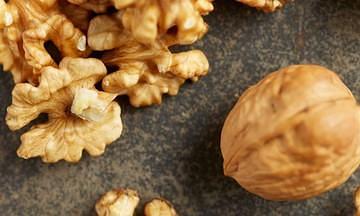 Cancer is a 4-letter word. Yes, there are 6 letters, yet it has become known as “the c-word,” too scary to be called by its real name.
Cancer is a 4-letter word. Yes, there are 6 letters, yet it has become known as “the c-word,” too scary to be called by its real name.
While food is a daily behavior we can leverage for health, fewer than 1 in 10 consumers in the U.S. associate specific foods with cancer risk reduction, according to a survey of U.S. consumers conducted by the International Food Information Council Foundation (IFIC) in 2014.[1]
In contrast, the American Institute for Cancer Research has estimated that one-third of the cancers that occur in the U.S. could be prevented through healthful eating, physical activity, and maintaining a healthful body weight.[2] Another interesting development uncovered by IFIC Foundation in 2013 is that consumers increasingly prioritize health when making food decisions. In fact, consumers now assert that healthfulness is as important as price,1 while it used to trail behind both price and taste.[3]
We want to improve our chances against cancer, and we can.
- Start with the basics of healthful eating throughout the lifespan. Cancer, like heart disease, diabetes, and other chronic diseases, develops over a lifetime. Whether you are a mother, mother-to-be, or in a position to support new moms, know that eating well during pregnancy, breastfeeding during infancy, and encouraging healthful habits throughout childhood are critical to a good start in life.
From childhood throughout life, eat enough, neither too much nor too little. Focus on nutrient-packed foods, such as walnuts, to satisfy hunger.
A well-rounded plant-forward diet means that vegetables, whole grains, legumes, nuts, seeds, and fruits are a priority. There is room on the plate for low fat dairy, fish, eggs, and lean meats as an accompaniment rather than the focus of the meal. With a plant-forward diet, get enough omega-3 fats by including walnuts and fatty fish such as salmon weekly. Protein recommendations can be met even if meat portions are kept small by adding nuts, legumes, fish, and low-fat dairy.
- Think big when it comes to your health. Don’t do one good thing (exercise) so that you can justify another bad thing (smoking for example). Make healthful lifestyle choices and indulge yourself with care and respect.
Seek to understand your individual cancer risk. Cancer is actually a set of diseases that differ tremendously in terms of how they develop and what increases or decreases risk, based to an extent on the part of the body that is affected. There are risk questionnaires, such as the ones created by National Cancer Institute (http://www.cancer.gov/bcrisktool/) and MD Anderson Cancer Center (https://www3.mdanderson.org/publicedu/prevention/). Then talk with your doctor and a registered dietitian nutritionist (RDN) about specific dietary changes that relate to cancers that are relevant to your health.
As you nudge habits to a healthier place, remember that taste and health can go hand-in-hand. A handful of walnuts, a sprinkling of cinnamon, or an added walk in the afternoon are each unique ways to help reduce your risk of cancer. There are no magic bullets, just handfuls, sprinklings, and small steps that together build your defense against cancer.
Sources:
[1] International Food Information Council Foundation. 2014 Food and Health Survey. April 1, 2014. http://www.foodinsight.org/sites/default/files/2014%20Food%20and%20Health%20Survey%20Full%20Report.pdf.
[2] American Institute for Cancer Research. Reduce Your Cancer Risk Web Site. May 17, 2013. http://www.aicr.org/reduce-your-cancer-risk/.
[3] International Food Information Council Foundation. 2013 Food and Health Survey. April 1, 2013. http://old.foodinsight.org/LinkClick.aspx?fileticket=spavtJtVkzM%3d&tabid=1482.
